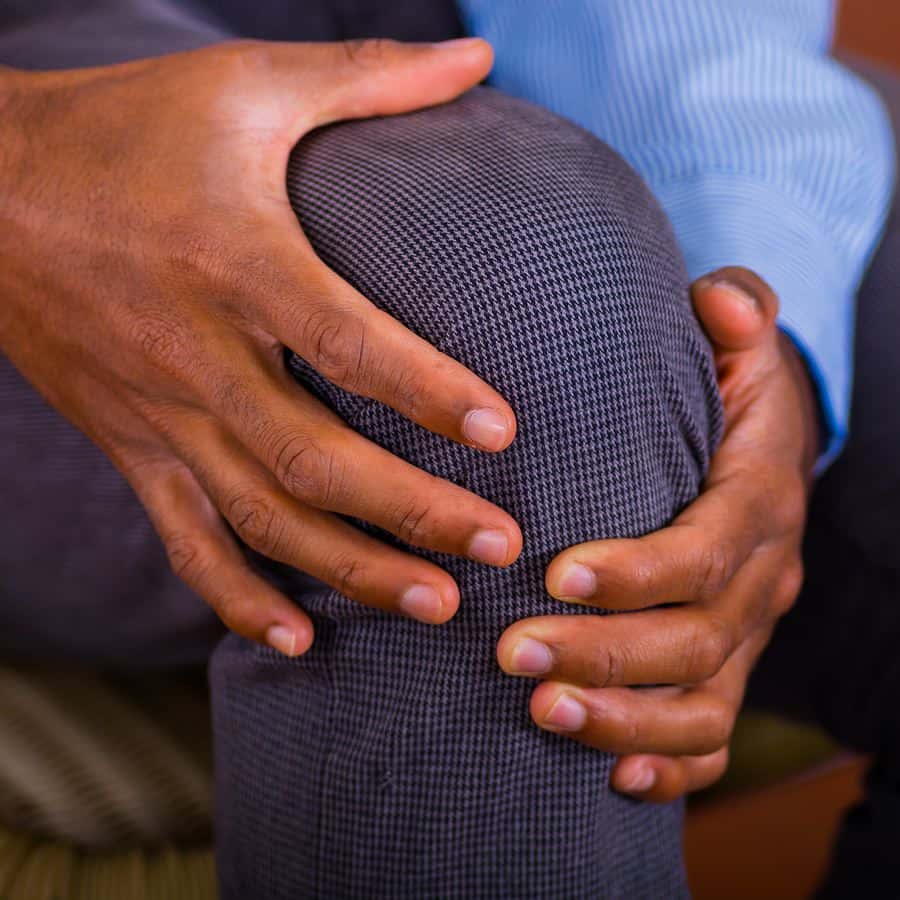
Have you ever heard of platelet-rich plasma? Most people have not. PRP injections have been around since about 2000. They were initially used during dental surgery. More recently, PRP injections have been used to treat athletic injuries such as pulled hamstrings, tendinitis, joint injuries and sprains. Some practitioners employ PRP injections for knee arthritis. Mainstream medicine has some reservations about this therapy, but this reader is enthusiastic.
PRP Injections for Knee Pain:
Q. I could not walk up or down the three steps to enter my home without assistance because of severe knee pain. My sports medicine doctor gave me three weekly PRP (platelet-rich plasma) injections to the knee under guided ultrasound.
The results were astounding. Pain is gone. Crepitations (crinkling sounds) are almost gone. I can climb a flight of wood stairs with very minimal discomfort.
It’s been about two years since the injections and during this time I have walked and climbed all over Egypt, Turkey and France. PRP injections also cured my agonizing plantar fasciitis after I had tried all sorts of treatments without success. Be sure the doctor uses ultrasound during the injections.
Is There Any Science to Support PRP Injections?
A. Platelet-rich plasma is prepared from the patient’s own blood and reinjected into the knee joint. A systematic review of 12 studies compared PRP injections to hyaluronic acid (HA) injections (European Journal of Orthopaedic Surgery & Traumatology, online, Feb. 14, 2020). HA is a natural anti-inflammatory substance the body makes.
In this meta-analysis, PRP injections were better for knee joint pain compared to the HA injections. The benefits were detectable after six months and after one year. This research appears to confirm your experience that PRP injections can help ease knee pain.
Other Research:
This is not the only study to report some benefit after PRP injections. Many arthritis researcher rely on the WOMAC pain and function score to evaluate treatment. WOMAC stands for Western Ontario and McMaster Universities Osteoarthritis Index.
A meta-analysis of 10 randomized controlled trials published in the journal Arthroscopy (March, 2017) also reported improvement with PRP:
“Current evidence indicates that, compared with HA [hyaluronic acid] and saline, intra-articular PRP injection may have more benefit in pain relief and functional improvement in patients with symptomatic knee OA [osteoarthritis] at 1 year postinjection.”
Another meta-analysis of leukocyte-rich platelet-rich plasma (LR-PRP) published in the American Journal of Sports Medicine (Jan. 2017) concluded:
“There is good evidence to support the use of a single injection of LR-PRP under ultrasound guidance in tendinopathy. Both the preparation and intratendinous injection technique of PRP appear to be of great clinical significance.”
A Word of Caution:
Despite this reader’s excellent response to PRP injections and the studies described above, there are still unanswered questions.
A review published in Current Rheumatology Reports (May, 2017) concluded:
“There are no RCTs [randomized controlled trials] investigating the effects of PRP on OA [osteoarthritis] structural changes. No definitive conclusions can be made about the effects of PRP in OA given methodological concerns and considerable heterogeneity between studies. Further high-quality research is needed to establish the clinical and cost-effectiveness of PRP, the patients most likely to benefit and the optimal PRP protocol.”
We think this caution is warranted. Here are some readers who did not have such great outcomes.
Dee spent quite a lot of money without getting benefit:
“I spent over $1100 on several PRP injections. I expressed my skepticism to the doctor who was pushing this procedure. He kept saying PRP would work. Well, it didn’t and so I lost $1100. I don’t recommend this procedure. It was a nightmare from beginning to end.”
M. J. offered this brief overview:
“I know people who had PRP but insurance doesn’t pay for it and it didn’t work that well for more than six months.”
To end this discussion of PRP injections, here is a more positive account from M. C. K.:
“I’m a believer in PRP! When I went in for my semi-regular shot of cortisone, my forward-thinking doctor mentioned PRP to me. His medical clinic had just been approved for the procedure. With a big international trip (and lots of tourist walking ahead), I decided to start treatments.
“There was no way I could have walked the 12-16 miles a day otherwise. By the time we left in June, I had had 3 monthly injections in my left hip and 2 in my left knee. I felt the improvement immediately, and with each succeeding injection (alternating between the hip and knee) it got even better. I only limped once during our trip — at mile marker 15 going uphill at Peterhof Palace in Russia!
“It doesn’t hurt (at least my doc doesn’t – he has incredible aim with that small needle). It’s a positive way to heal yourself, and it beats the heck out of the idea of having either joint replaced. Cheaper too.
“PRP therapy was approved by Medicare @ 2005-6 and so far, my supplementary insurance coverage has covered everything else.”
We suspect that not every insurance company will pay for PRP. And despite this glowing report, we still want to see more well-conducted research before we endorse this approach.
Have you had PRP injections? If so, please share your experience in the comment section below.
Citations
- HohmannE et al, "Is platelet-rich plasma effective for the treatment of knee osteoarthritis? A systematic review and meta-analysis of level 1 and 2 randomized controlled trials." European Journal of Orthopaedic Surgery & Traumatology, online, Feb. 14, 2020. DOI: 10.1007/s00590-020-02623-4
- Dai WL et al, "Efficacy of platelet-rich plasma in the treatment of knee osteoarthritis: A meta-analysis of randomized controlled trials." Arthroscopy, March, 2017. DOI: 10.1016/j.arthro.2016.09.024

